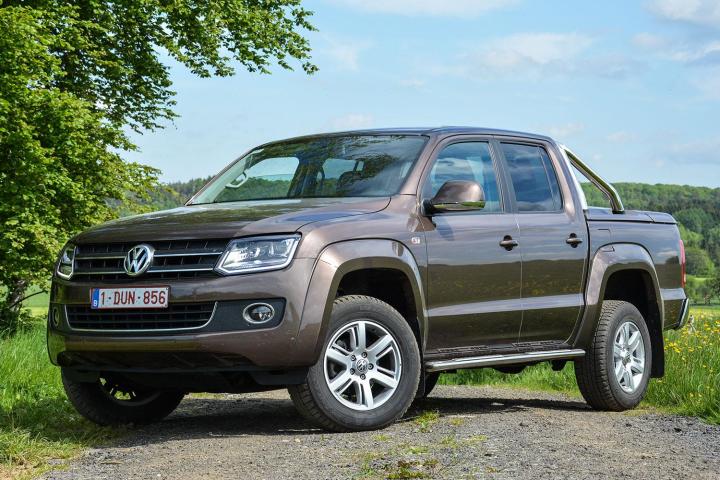
Models eligible to compete in the V8 Utes series are the El Camino-esque, car-based trucks that were built by Ford and General Motors’ Holden division for decades. Ford’s Falcon is out of the automotive landscape for good and the Holden Ute will follow shortly, so SuperUtes was created for mid-size pickup trucks like the Chevrolet Colorado, the Ford Ranger, the Toyota Hilux, and the Volkswagen Amarok (pictured).
Only dual-cab, rear-wheel drive trucks powered by a turbodiesel engine will be eligible to race in the SuperUtes series. They’ll be based on production models, but they’ll be modified with an array of performance and safety parts developed by the governing body’s engineering department. The add-ons will include a new exhaust, a remapped ECU, an entirely new suspension setup, and bigger brakes on both ends.
Australian website Motoring points out the trucks will also need a full roll cage, as well as race-specific wheels and tires before they’re allowed on the track. Finally, they’ll also wear body kits and eye-catching paint jobs. All told, turning a run-of-the-mill truck designed to tow cattle into a track machine worthy of the SuperUte name will cost approximately $45,000. More precise technical details will be announced in the coming months.
The first SuperUtes race is scheduled to take place in July. The inaugural season will only include six races and anywhere between 15 and 20 entrants, but the organizers believe it will quickly grow. V8 Utes will be phased out next year, and by 2018 there will be up to 32 teams competing in a full season’s worth of SuperUtes races.



